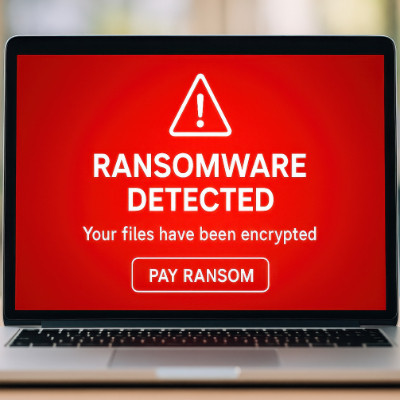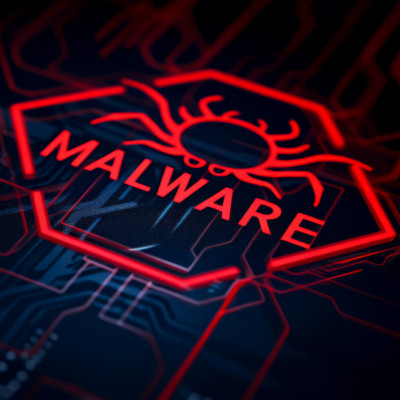Master Solutions Blog
You want your company’s technology to aid your employees in getting their work done, not hinder their ability to be productive. This might seem like a logical statement, but you’d be surprised by how many businesses struggle with implementing the right technology for the right job. If you want to increase employee morale, build a better company culture, and boost productivity, your company should consider the following technologies for the employee experience.
Learning a new piece of software can be challenging, even for the techiest employees out there. If you don’t provide enough support during this period, it could lead to frustration, wasted time, and a general resistance to change. Thankfully, you can address these issues by examining the psychological, organizational, and training-related factors at play when learning new software.
There is a seemingly infinite number of cybersecurity threats out there, but there are few threats more dangerous than ransomware. If a business hasn’t taken precautions against it, ransomware can (and will) find ways to extort money, hold data hostage, and threaten that organization’s continuity. Today, we want to cover what ransomware does, what you need to do to prevent it, and what to do if you’re attacked.
Are you tired of that afternoon slump, the achy back, or just feeling generally sluggish after hours of sitting? Well, what if I told you there's a simple change you can make that could improve your workday and boost your well-being? We're talking about the mighty standing desk.
We're all looking for ways to feel better and be more productive, and standing desks are quickly becoming a must-have for good reason. Let's walk around some of the awesome benefits they bring to the table.
Remember the days of overflowing “In” trays and filing cabinets threatening to take over entire rooms? For many businesses, that reality isn't history—it's Monday morning. The constant printing, copying, and shuffling of paper isn't just clutter; it's a drain on your resources. In this month’s newsletter, we go into why a Document Management System (DMS) is such a useful resource for modern companies.
Is your business technology a tangled web of frustrations? You're certainly not navigating this digital dilemma alone. We frequently hear from organizations grappling with sluggish networks, outdated software that feels like a relic from the dial-up era, and the ever-present anxiety of safeguarding crucial business data.
This technological turbulence doesn't have to be your reality. Today, we're charting a course to help you reconstruct your IT infrastructure from the ground up, paving the way for smoother operations and greater peace of mind.
More often than not, you have an employee on staff who rolls their eyes whenever you have to send out another cybersecurity email or reminder. This “who cares” mindset is dangerous and can infect your business in a profoundly disturbing way. Today, we want to get into why this “who cares” mindset is so dangerous and what’s really at stake when you have an employee who can’t get on board with your security policies.
When it comes to being productive, most people think of time management tools or multitasking strategies. One of the most overlooked factors in productivity is simply feeling good. That means physically, mentally, and emotionally. On days when your mood is high and your energy is up, work tends to feel easier and more manageable. That’s no coincidence. Productive individuals understand that how you feel directly impacts how you perform.
Malware can be scary to talk about, but it’s a topic that you should be intimately familiar with, or at least aware of, if you want to keep your business running. These days, you can’t do much of anything online without potentially exposing yourself and your organization to a security risk. Today, we want to explore the different types of malware you might encounter and why it’s so important to take action today to limit their influence on your business.
One of our favorite questions to answer for our clients is, “How do you help us save money?” When you outsource your IT, saving money is one of the big goals, so we thankfully have a full-fledged answer to this question. Today, we will share three of the best ways you’ll save money and resources by working with Master Solutions for managed IT services.
Businesses need tools to help their employees collaborate, and thankfully, there has never been a better time to find the ideal solution that works for your specific needs. Since so many individuals work remotely these days, developers have prioritized collaboration, and all businesses reap the benefits of this trend. One of the keys to effective collaboration is file sharing; nowadays, it’s never been easier to do it easily and efficiently.
Video conferencing is one of those technologies that have revolutionized the way we work. Over the past decade, however, it has gone from being something super cool to being an essential technology every business needs. The shift towards remote work and digital collaboration, accelerated by the COVID-19 pandemic, has punched the innovation of video conferencing into high gear. These changes have not only enhanced the quality and reliability of virtual meetings but have also expanded their accessibility and functionality, making it easier for people to connect and collaborate across distances. Let’s discuss how video conferencing has advanced.
Business is not always a good time. There are times when things are going well, and then one problem pops up that leads to other problems, opening what seems to be an endless cycle of issues that you need to deal with. Some of these problems seem like they are catastrophic. While it may seem impossible, keeping a positive frame of mind can make all the difference when facing a river of problems. Today, we’ll go through a few things you can do to keep a positive frame of mind when things seem to be falling apart right in front of you.
Remote work has been a mainstay in most businesses’ standard operating procedures in at least some capacity, but it opens up a nasty can of worms regarding cybersecurity. If cybersecurity is not your top priority, and you have remote or hybrid employees, we need to have a talk—and probably a hard one.
Numerous workplace trends have emerged in the past few years, many of which employers are not fond of. “Quiet quitting” is an example of such a trend, where workers will do the bare minimum—nothing more—to retain their employment. More recently, the trend has been to “act your wage.”
Let’s look at what this means and how to handle it if you ever encounter it in your business.
Today's consumers are exceptionally knowledgeable, which makes you need to prioritize a proactive approach to creating exceptional customer experiences to build lasting relationships. Let’s explore strategies for enhancing customer satisfaction and retention.
Whether you like it or not, change comes for us all—particularly for businesses. Any organization that hopes to see any significant growth or innovation will be subject to change. Your organization should be capable of working with change, and when it comes to factors that can influence how well you adapt to change, there is no greater tool than your company’s IT.
There are many ways to increase your team's productivity, but one of the less obvious ones is to consider an alternative work week. Specifically, the idea in question is the four-day workweek, which advocates argue could potentially increase productivity by virtue of working less.
Your business is as valuable as the data it collects, meaning that if you’re not taking full advantage of your data, you’re leaving money on the table. SMBs need all of the strategic advantages they can get, and one way you can gain such an advantage on your competition is through utilizing big data. Let’s explore how big data can transform your operations for the better.
Businesses have done incredible things with the cloud, regardless of their chosen industries, sizes, and scopes. In particular, they have innovated to create opportunities for scaling growth and operations. How can your organization do the same? We want to help you implement a cloud solution that addresses all of your pain points. To do this, you can start by learning more about the differences between the public, private, and hybrid cloud solutions available to you.




















